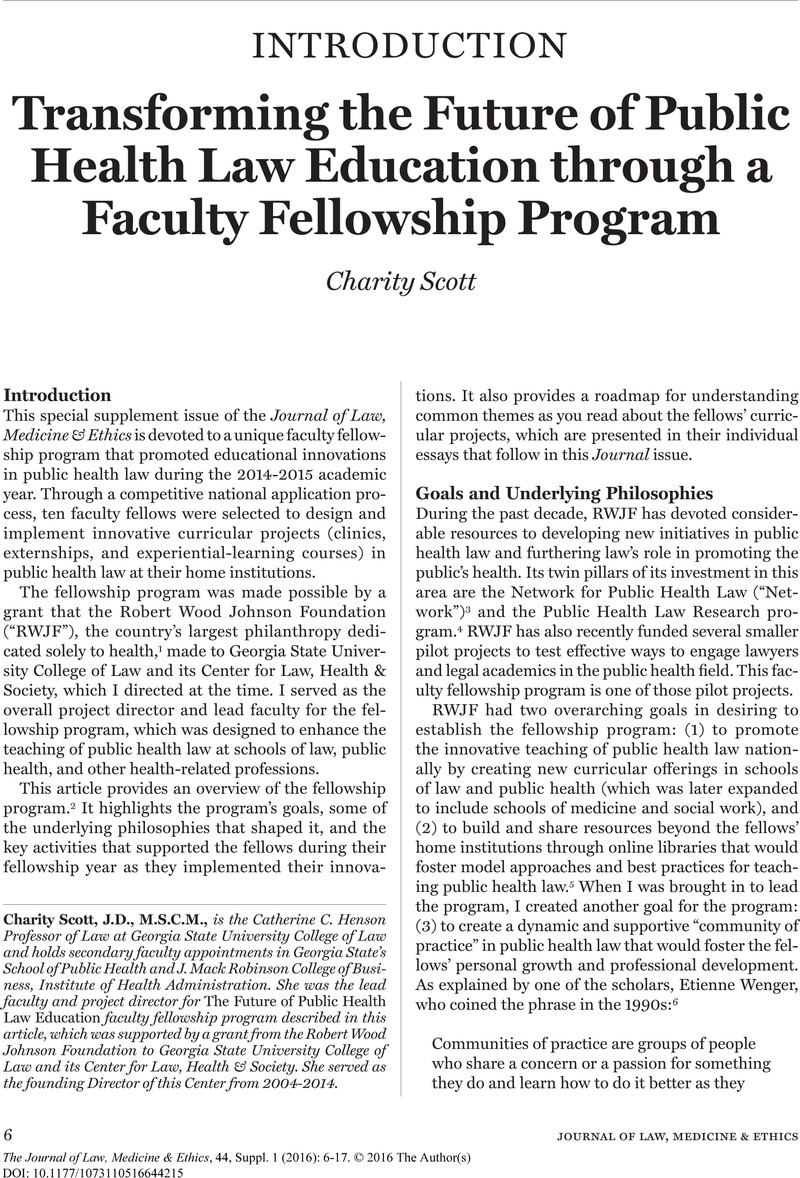Crossref Citations
This article has been cited by the following publications. This list is generated based on data provided by Crossref.
Crossley, Mary
and
Silverman, Ross D.
2016.
Reflections on Mentoring.
Journal of Law, Medicine & Ethics,
Vol. 44,
Issue. S1,
p.
76.
Hoffmann, Diane E.
2016.
The Importance of Including the Deans.
Journal of Law, Medicine & Ethics,
Vol. 44,
Issue. S1,
p.
81.
Hermer, Laura D.
2016.
Expanding Interdisciplinary Learning Opportunities on a Shoestring through a Medical-Legal Partnership.
Journal of Law, Medicine & Ethics,
Vol. 44,
Issue. S1,
p.
51.
Tyler, Elizabeth Tobin
2016.
Teaching Prevention: An Interdisciplinary Approach to Improving Population Health through Law and Policy.
Journal of Law, Medicine & Ethics,
Vol. 44,
Issue. S1,
p.
62.
Gatter, Robert
2016.
Teaching Population Health Outcomes Research, Advocacy, and the Population Health Perspective in Public Health Law.
Journal of Law, Medicine & Ethics,
Vol. 44,
Issue. S1,
p.
41.
Berman, Micah L.
2016.
Combining Accreditation and Education: An Interdisciplinary Public Health Law Course.
Journal of Law, Medicine & Ethics,
Vol. 44,
Issue. S1,
p.
18.
Kaufman, Nancy J.
and
Scott, Charity
2016.
Innovation in Higher Education: Lessons Learned from Creating a Faculty Fellowship Program.
Journal of Law, Medicine & Ethics,
Vol. 44,
Issue. S1,
p.
97.
Campbell, Amy T.
2016.
Building a Public Health Law and Policy Curriculum to Promote Skills and Community Engagement.
Journal of Law, Medicine & Ethics,
Vol. 44,
Issue. S1,
p.
30.
Gerardi, Debra
2016.
Polishing the Apple: A Holistic Approach to Developing Public Health Law Educators as Leaders of Change.
Journal of Law, Medicine & Ethics,
Vol. 44,
Issue. S1,
p.
87.
McCabe, Heather A.
2016.
Seminar in Public Health Law and Policy in an Interprofessional Setting: Preparing Practitioners for Collaborative Practice at the Macro Level.
Journal of Law, Medicine & Ethics,
Vol. 44,
Issue. S1,
p.
56.
Van Nostrand, Elizabeth (Bjerke)
2016.
Tearing Down the Silos: An Interdisciplinary, Practice-Based Approach to Graduate School Education.
Journal of Law, Medicine & Ethics,
Vol. 44,
Issue. S1,
p.
69.
Davis, Sarah
2016.
Educating the New Public Health Law Professional.
Journal of Law, Medicine & Ethics,
Vol. 44,
Issue. S1,
p.
35.
Herbst, Jennifer L.
2016.
Public Health Law as a Way to Explore and Develop Professional Identity.
Journal of Law, Medicine & Ethics,
Vol. 44,
Issue. S1,
p.
45.
Kershner, Stacie P.
2016.
Best Practices for Teaching Public Health Law: Two Online Resource Libraries.
Journal of Law, Medicine & Ethics,
Vol. 44,
Issue. S1,
p.
93.
Boies, Kimberly Cogdell
2016.
Promoting Diversity in Public Health Law through Online Education.
Journal of Law, Medicine & Ethics,
Vol. 44,
Issue. S1,
p.
24.



